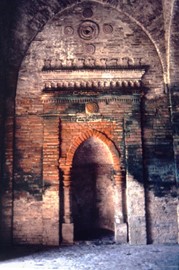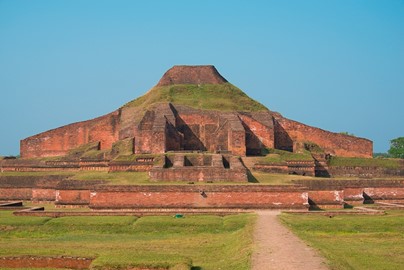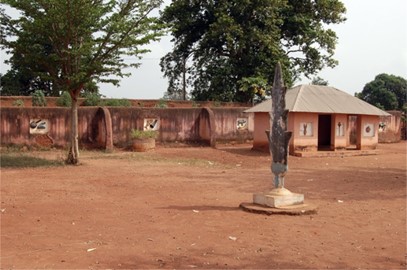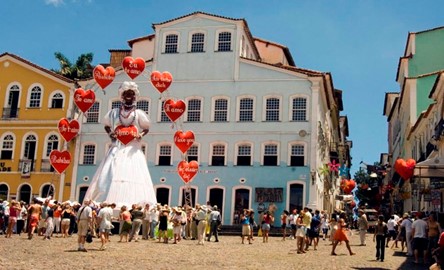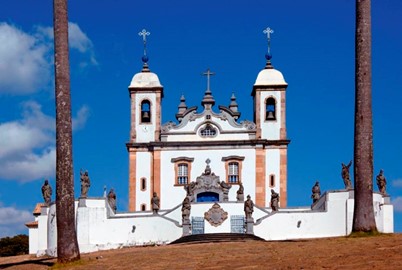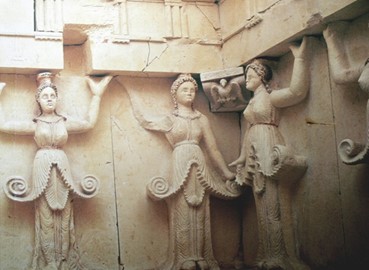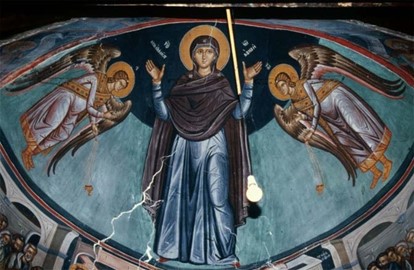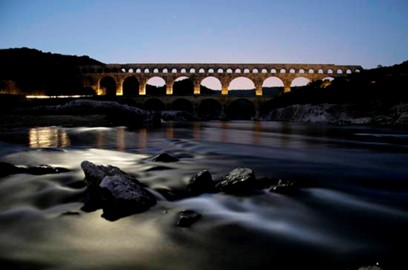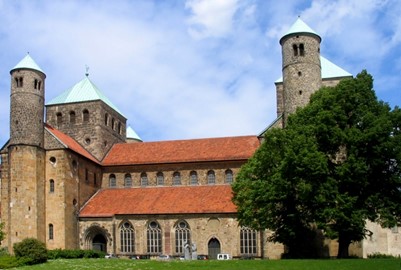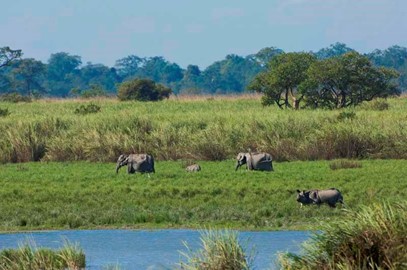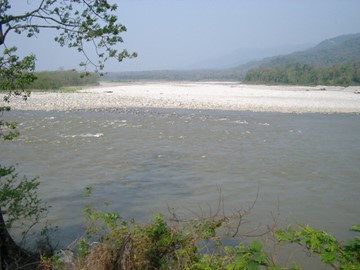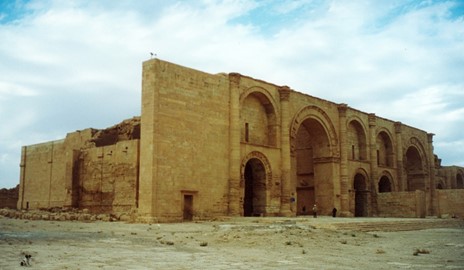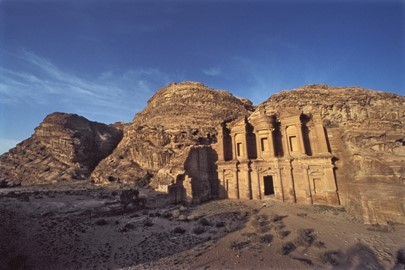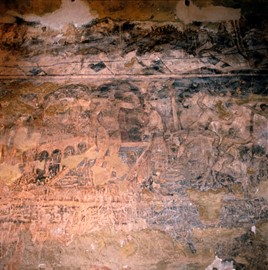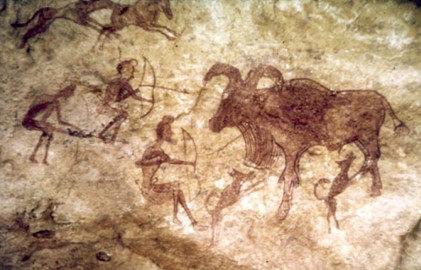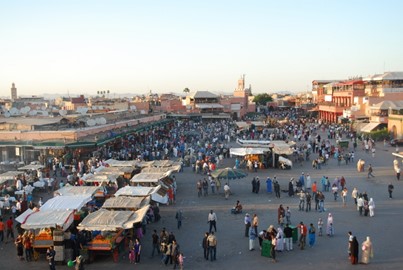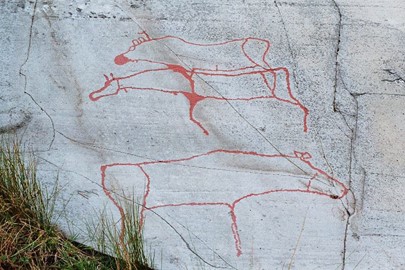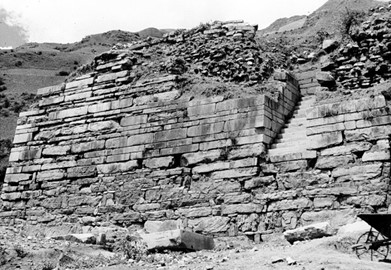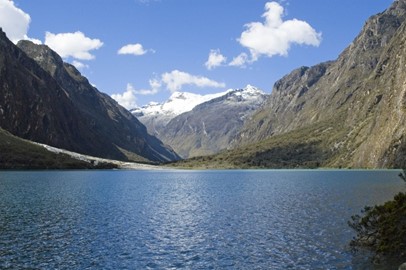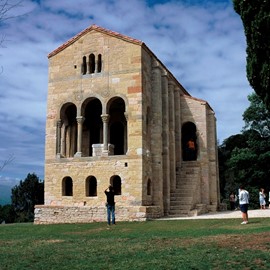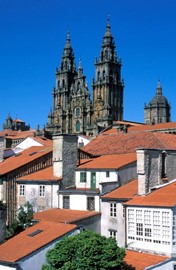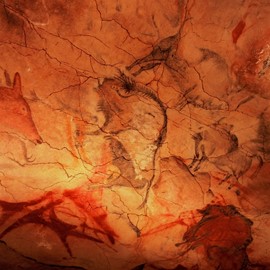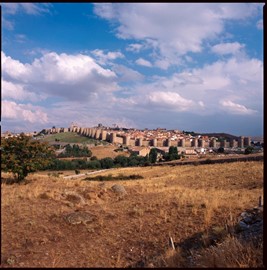year :: 1985
Bagerhat
Bagerhat, a UNESCO World Heritage site in Bangladesh, is a historic city famed for its remarkable collection of 15th-century mosques and mausoleums. Built by the Muslim ruler Khan Jahan Ali, its architectural gems, like the Sixty Dome Mosque with its intricate brickwork, showcase early Islamic design in the region. Set amidst a tranquil landscape of water tanks and ruins, it reflects a blend of spirituality and urban planning. This ancient site stands as a testament to Bangladesh’s rich cultural and archite... Read More
Buddhist Vihara
Buddhist Vihara, a UNESCO World Heritage site in Bangladesh, is an ancient monastic complex renowned for its historical and archaeological significance. Dating back to the 7th century, this sprawling ruin features a central cruciform temple surrounded by monastic cells, reflecting early Buddhist architecture and community life. Excavations have uncovered intricate terracotta plaques and artifacts, offering insights into the region’s religious past. This well-preserved site stands as a vital link to Banglade... Read More
Royal Palaces of Abomey
The Royal Palaces of Abomey, a UNESCO World Heritage site in Benin, are a historic complex of earthen structures built by the Fon kings between the 17th and 19th centuries. Spanning 12 palaces, they feature intricate bas-reliefs and artifacts that narrate the kingdom’s history, culture, and power. Recognized by UNESCO in 1985, the site reflects the architectural ingenuity and political legacy of the Dahomey Kingdom. Despite past damage, it remains a striking symbol of Benin’s royal heritage.
Salvador da Bahia
The Historic Centre of Salvador de Bahia, a UNESCO World Heritage site in Brazil, is a colorful colonial district renowned for its Afro-Brazilian culture and architecture. Established in 1549 as Brazil’s first capital, it features cobblestone streets, vibrant churches, and 16th-century buildings blending Portuguese and African influences. Recognized by UNESCO in 1985, it’s a living testament to the country’s early history and cultural fusion. Salvador remains a dynamic symbol of Brazil’s diverse heritage.
Sanctuary of Bom Jesus do Congonhas
The Sanctuary of Bom Jesus do Congonhas, a UNESCO World Heritage site in Brazil, is an 18th-century Baroque complex celebrated for its artistic and religious significance. Featuring a church, ornate staircases, and 12 life-sized soapstone statues of prophets by sculptor Aleijadinho, it reflects colonial mastery. Inscribed by UNESCO in 1985, it stands as a pinnacle of Brazilian sacred art and architecture. The sanctuary remains a striking emblem of the country’s cultural heritage.
Thracian Tomb of Sveshtari
The Thracian Tomb of Sveshtari, a UNESCO World Heritage site in Bulgaria, is a 3rd-century BCE masterpiece of Thracian architecture and art. This well-preserved burial chamber, featuring a unique decorative frieze of ten caryatid-like female figures, showcases exceptional craftsmanship and offers insight into Thracian funerary practices and beliefs. Celebrated for its historical and cultural value, it reflects the sophistication of an ancient civilization in the region.
Québec
Old Québec, a UNESCO World Heritage site in Canada, is a historic gem founded in 1608, showcasing North America’s best-preserved colonial fortified city. With its cobblestone streets, 17th- and 18th-century architecture, and landmarks like the Château Frontenac, it reflects French cultural roots and early European settlement. Recognized for its historical and architectural value, it stands as a living testament to Canada’s colonial past.
Painted Churches in the Troodos Region
The Painted Churches, a UNESCO World Heritage site in Cyprus, are a collection of ten Byzantine churches renowned for their exceptional frescoes and murals dating from the 11th to 16th centuries. Nestled in a mountainous region, these small, stone-built structures showcase a unique blend of Byzantine and post-Byzantine art, reflecting the island's rich cultural and religious history. Their well-preserved wall paintings depict biblical scenes, saints, and intricate decorative patterns, offering a glimpse int... Read More
Pont du Gard
Pont du Gard, a UNESCO World Heritage site in France, is an ancient Roman aqueduct bridge built in the 1st century AD to carry water across a river valley. Standing three tiers high, its massive stone arches showcase remarkable engineering and durability. Constructed without mortar, it remains one of the best-preserved structures of its kind. The bridge once supplied a thriving Roman colony with fresh water, highlighting advanced infrastructure. Its elegant design blends seamlessly with the natural landscap... Read More
Hildesheim Cathedral and St Michael's Church
Hildesheim Cathedral and St. Michael’s Church, a UNESCO World Heritage site in Germany, represent outstanding examples of early Romanesque architecture. The cathedral, dedicated to St. Mary, features the famous bronze Bernward Doors and a 1,000-year-old rose bush, symbolizing resilience. St. Michael’s Church, built under Bishop Bernward’s patronage, showcases intricate design and a unique painted ceiling depicting the Tree of Jesse. Together, these landmarks highlight medieval artistry and religious signifi... Read More
Kaziranga
Kaziranga National Park, a UNESCO World Heritage Site in India, is renowned for its rich biodiversity and conservation success. It serves as a critical habitat for the world’s largest population of the Indian one-horned rhinoceros, alongside tigers, elephants, and numerous bird species. The park’s unique ecosystem, featuring grasslands, wetlands, and forests, supports a thriving wildlife population and attracts global attention for its natural heritage.
Manas Wildlife Sanctuary
Manas Wildlife Sanctuary, a UNESCO World Heritage site in India, is a biodiversity hotspot renowned for its rich flora and fauna. This protected reserve is home to numerous endangered species, including the Bengal tiger, Indian elephant, and pygmy hog. The sanctuary also serves as a critical habitat for the rare golden langur and supports a diverse ecosystem of grasslands, forests, and riverine landscapes. Its significance lies in its role as a conservation area, promoting ecological balance and wildlife pr... Read More
Keoladeo
Keoladeo National Park, a UNESCO World Heritage site in India, is a renowned wetland sanctuary famous for its rich biodiversity and vibrant birdlife. Originally a royal hunting ground, it now hosts over 370 bird species, including migratory waterfowl like the Siberian crane, alongside diverse mammals and reptiles. Its unique mosaic of wetlands, woodlands, and grasslands supports a thriving ecosystem, making it a critical conservation site and a paradise for nature enthusiasts.
Hatra
Hatra, a UNESCO World Heritage site in Iraq, is an ancient fortified city renowned for its blend of Hellenistic, Roman, and Eastern architectural styles. Established around the 2nd century BC, it features well-preserved temples, statues, and defensive walls that highlight its historical role as a thriving religious and trading center. This desert stronghold reflects the cultural richness of the Parthian Empire and its resilience against invasions.
Petra
Petra, a UNESCO World Heritage site in Jordan, is an ancient city renowned for its rock-cut architecture and sophisticated water management system. Carved into rose-red cliffs, its iconic structures, like the Treasury and Monastery, highlight the engineering and artistic prowess of the Nabataean civilization. This archaeological marvel, blending natural beauty with historical significance, served as a thriving trade hub in antiquity.
Quseir Amra
Quseir Amra, a UNESCO World Heritage site in Jordan, is a well-preserved desert castle renowned for its unique frescoes and historical significance. Built in the early 8th century, this small structure features vibrant wall paintings depicting scenes of hunting, bathing, and celestial figures, offering a rare glimpse into the art and culture of its time. The site also includes a bathhouse with a sophisticated water system, highlighting ancient architectural ingenuity in a harsh desert environment.
Tadrart Acacus
Tadrart Acacus, a UNESCO World Heritage site in Libya, is renowned for its stunning rock art and dramatic desert landscapes. The site features thousands of ancient paintings and engravings, dating back over 12,000 years, depicting human figures, animals, and daily life from prehistoric times. These artworks offer invaluable insights into the region’s cultural and environmental history, making it a globally significant archaeological treasure.
Medina of Marrakesh
The Medina of Marrakesh, a UNESCO World Heritage site in Morocco, is a historic walled city renowned for its vibrant cultural and architectural legacy. Founded in the 11th century, it features a labyrinth of narrow streets, bustling souks, and iconic landmarks like the Koutoubia Mosque, blending Islamic, Berber, and Andalusian influences. Its well-preserved medieval urban fabric and lively atmosphere, exemplified by the Jemaa el-Fnaa square, highlight its significance as a living testament to Moroccan herit... Read More
Rock Art of Alta
The Rock Art of Alta, a UNESCO World Heritage site in Norway, features thousands of prehistoric carvings and paintings dating back to 4200–500 BC. Created by hunter-gatherer communities, these artworks depict animals like reindeer, elk, and fish, as well as human figures engaged in hunting, fishing, and rituals. Discovered in the late 20th century, the site offers valuable insights into the daily life, beliefs, and environment of ancient societies. Its well-preserved state makes it a significant archaeologi... Read More
Chavin
Chavín de Huántar, a UNESCO World Heritage site in Peru, is an ancient archaeological site dating back to around 1200 BCE. Located in the Andean highlands, it served as a major ceremonial and cultural center for the Chavín civilization, known for its distinctive art and architecture. The site features a complex of stone structures, including the U-shaped Old Temple and the larger New Temple, adorned with intricate carvings of felines, birds, and anthropomorphic figures. Its significance lies in its role as ... Read More
Huascarán
Huascarán National Park, a UNESCO World Heritage site in Peru, spans 340,000 hectares of the Cordillera Blanca mountain range, featuring the country's highest peak, Huascarán, at 6,768 meters. Established in 1975, it protects diverse ecosystems, including montane forests, glacial lakes, and unique high-altitude Puya raimondii plants. The park is home to rare wildlife like the Andean condor, spectacled bear, and vicuña. Its stunning landscapes and biodiversity make it a critical conservation area and a draw ... Read More
Asturian Monuments
The Asturian Monuments, recognized as a UNESCO World Heritage site, are a collection of pre-Romanesque architectural treasures dating back to the 9th century. These structures, including churches and royal buildings, showcase a unique blend of Visigothic, Mozarabic, and early Christian influences, reflecting the cultural richness of the period. Built during the reign of the Asturian kings, they stand as remarkable examples of early medieval engineering and artistry. Their historical significance and well-pr... Read More
Santiago de Compostela
Santiago de Compostela, a UNESCO World Heritage site in Spain, is a historic city renowned for its cultural and religious significance. It serves as the culmination of the Camino de Santiago pilgrimage route, attracting visitors to its stunning Romanesque, Gothic, and Baroque architecture. The city's focal point, the Cathedral of Santiago de Compostela, is believed to house the remains of Saint James, making it a key spiritual destination. Its well-preserved medieval streets and rich history cement its stat... Read More
Altamira Cave
Altamira Cave, a UNESCO World Heritage site in Spain, is renowned for its prehistoric rock art, dating back to the Upper Paleolithic period, approximately 36,000 to 13,000 years ago. Discovered in 1868, the cave features remarkable polychrome paintings and engravings of bison, horses, and other animals, created using charcoal, ochre, and natural contours of the rock. Often called the 'Sistine Chapel of Prehistoric Art,' it provides invaluable insight into early human creativity and culture. Due to preservat... Read More
Ávila
The Old Town of Ávila, a UNESCO World Heritage site in Spain, is renowned for its well-preserved medieval architecture, including its iconic city walls constructed in the 11th century. These walls, featuring 88 towers and nine gates, encircle a historic center filled with Romanesque and Gothic churches, such as the Ávila Cathedral, begun in 1091. The site reflects a blend of military, religious, and cultural influences, showcasing Spain’s rich historical legacy. Its significance lies in its exemplary urban ... Read More
